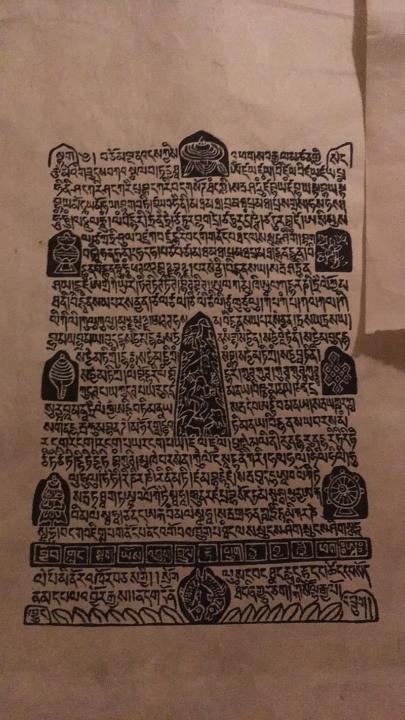“The Tibetan script is used for writing Tibetan in several countries and regions throughout the Himalayas. Aside from Tibet itself, the script is used in Ladakh, Nepal, and northern areas of India bordering Tibet where large Tibetan-speaking populations now reside. The Tibetan script is also used in Bhutan to write Dzongkha, the official language of that country. In Bhutan, as well as in some scholarly traditions, the Tibetan script is called the Bodhi script, and the particular version written in Bhutan is known as Joyi (mgyogs yig). In addition, Tibetan is used as the language of philosophy and liturgy by Buddhist traditions spread from Tibet into the Mongolian cultural area that encompasses Mongolia, Buriatia, Kalmykia, and Tuva.
The Tibetan scripting and grammatical systems were originally defined together in the sixth century by royal decree when the Tibetan King Songtsen Gampo sent 16 men to India to study Indian languages. One of those men, Thumi Sambhota, is credited with creating the Tibetan writing system upon his return, having studied various Indic scripts and grammars. The king’s primary purpose was to bring Buddhism from India to Tibet. The new script system was therefore designed with compatibility extensions for Indic (principally Sanskrit) transliteration so that Buddhist texts could be represented properly. Because of
this origin, over the last 1,500 years the Tibetan script has been widely used to represent Indic words, a number of which have been adopted into the Tibetan language retaining their original spelling.
A note on Latin transliteration: Tibetan spelling is traditional and does not generally reflect modern pronunciation. Throughout this section, Tibetan words are represented in italics when transcribed as spoken, followed at first occurrence by a parenthetical transliteration; in these transliterations, the presence of the tsek (tsheg) character is expressed with a hyphen.
Thumi Sambhota’s original grammar treatise defined two script styles. The first, called uchen (dbu-can, “with head”), is a formal “inscriptional capitals” style said to be based on an old form of Devanagari. It is the script used in Tibetan xylograph books and the one used in the coding tables. The second style, called u-mey (dbu-med, or “headless”), is more cursive and said to be based on the Wartu script. Numerous styles of u-mey have evolved since then, including both formal calligraphic styles used in manuscripts and running handwriting styles. All Tibetan scripts follow the same lettering rules, though there is a slight difference in the way that certain compound stacks are formed in uchen and u-mey.“ - The Unicode Consortium, The Unicode Standard 15.0


